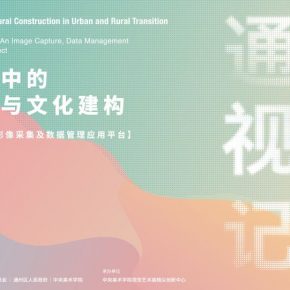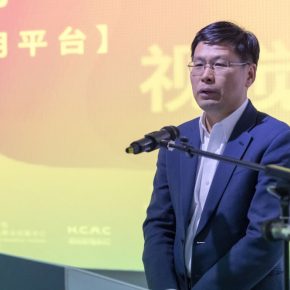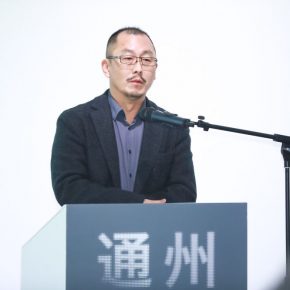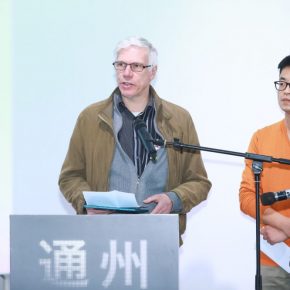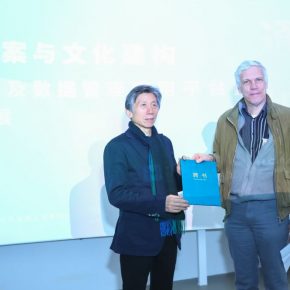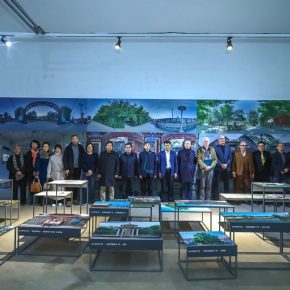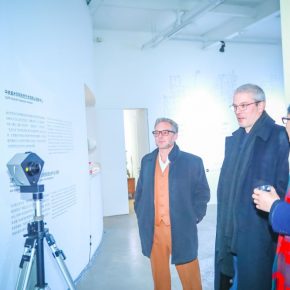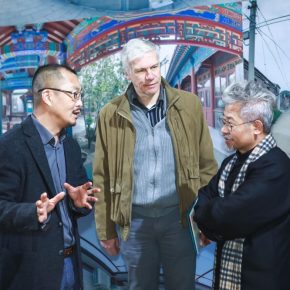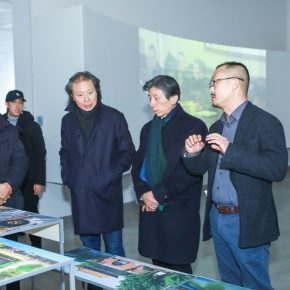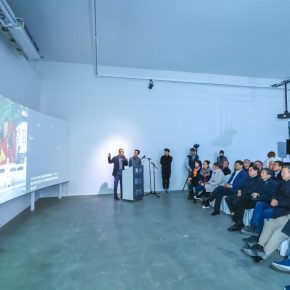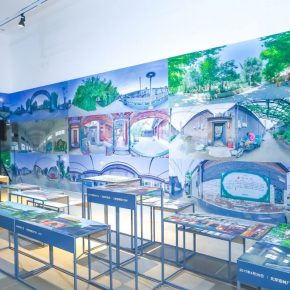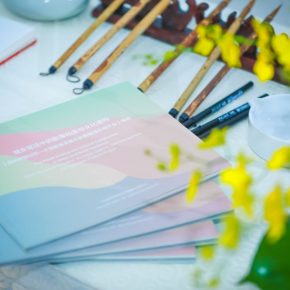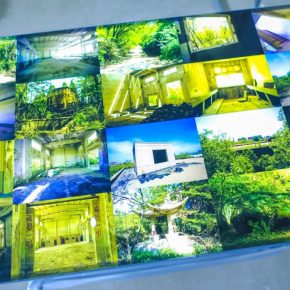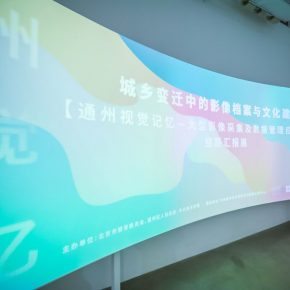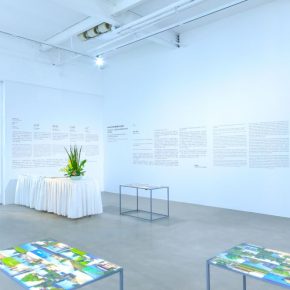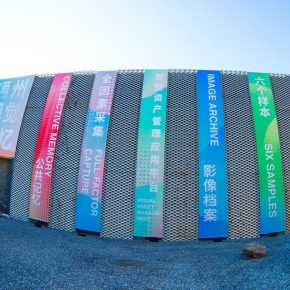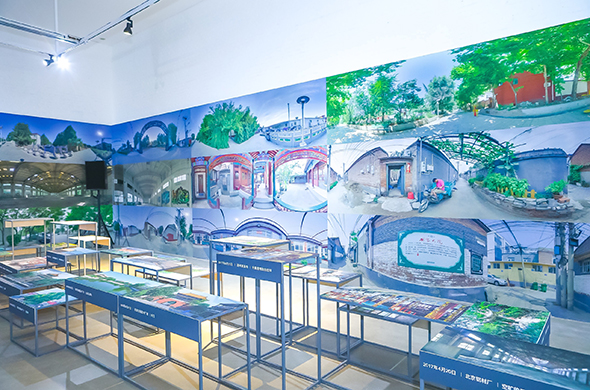
In recalling the streets and yards where?we used to?live in?our?childhood, they may not be wide, there were?always vendors along?the roadside, women who were?just finished work and trying to bargain for a few cents; next to these vendors?there were some youths?eating barbecued?meat and thick smoke, and the young children who were?not afraid of the vehicles chasing each other?in the alleys; under the old banyan tree near?the door, senior citizens?crowded playing poker or mahjong; the night was?descending,?through illuminating lights of the alleys accompanied by the smell of food, which make people speed up to get home... However, I don’t know when, the streets were?flattened, the alleys became flat avenues, and every household moved in?neat soaring buildings with close security doors?and the vibrant years are left behind. We?have?conscientiously lived in?the urban?construction?of modernization, and we are entangled in the past?while pushing forward?but we?have no time to stay in the past. Meanwhile, the public memories of a generation were wiped?away, covered, and forgotten, so they gradually loose their original appearance.
Confronted with?the tides?of globalization, the issue of urbanization is an inseparable issue.
Susan Sontag wrote?in “On Photography”: When the camera began?to replicate the world, it?was?also the occasion?when the human landscape began?to change at a dizzying?speed: when countless biological life forms and social life?forms?were?gradually destroyed in a very short period of time, a?device?came into being and recorded disappearing things. Under such a?background, in 2016, with the support of Fan Di’an, President of the Central Academy of Fine Arts and the Tongzhou District Government, Professor Wang Chuan from the Central Academy of Fine Arts presided over the establishment of the “Visual Memory?of Tongzhou?– An Image Capture, Data Management and Application Platform Project,” focusing on the record and protection of cultural landscapes and public memories in Chinese?urban-rural transitions, trying to integrate science and technology with art?to conduct a comprehensive and efficient image collection of urban and rural landscapes and cultural landscapes in Tongzhou, so as to quickly acquire various images and establish multi-dimensional visual archives based on cloud storage. This project will provide?a sincere?and detailed visual record for the development of the city, while filling the gap in the field of humanistic care in urban development.
“Urban construction and development cannot be separated from the memories of?the city history,” said Fan Di’an, President?of the Central Academy of Fine Arts, “how to better understand the cultural heritage from all aspects in Tongzhou while preserving?the memories?of historical life with modern technology, is truly?a new topic. The project ‘Visual Memory?of Tongzhou’?provides a new model.” Historically, Tongzhou is located in the “northern start of the Millennium Grand Canal, the eastern end of Baili Chang’an Street”, which is an important external gateway?for Beijing. The cultural assassination of the Beijing-Hangzhou Grand Canal from the south to the north as well as?the ancient capital of the Six Dynasties has?endowed?Tongzhou with an extremely rich visual asset during the long historical process. At the same time, the different stages of national developments?after the founding of the People’s Republic of China have also left traces?here, whether they are industrial relics scattered throughout the city, urban houses with different styles or surrounding towns and villages, all have retained their?distinctive traditional features. Today, Tongzhou, with its mission as “Sub-center?of Beijing”, is becoming an area?full of vitality and infinite possibilities under our testimony. Among the layout?in the new area, the entire Tongzhou area, especially the living environment for?local residents, will undergo tremendous changes. The usual?fields, rivers, streets, villages, and cities are striding into a new era with us. Today’s reality will become the history of tomorrow.
On December 13, 2018, the “Visual Memory?of Tongzhou” project presented its achievements?from its foundation?two years ago. The “Visual Memory?of Tongzhou?– An Image Capture, Data Management and Application Platform Project” was held at the Huaigulin Contemporary Art Center in Songzhuang, Tongzhou District. Fan Di’an, President?of the Central Academy of Fine Arts, and Zha?Xianyou, Propaganda?Minister?of Tongzhou District, Wang Chuan, Project Leader and Director of the Planning and Development Department?of the Central Academy of Fine Arts, and Luc Van Gool, Chief Expert for CAFA Visual Art Innovation Institute, attended the opening ceremony and they all delivered speeches. Zhao Yuying, Chairman of the Tongzhou District Political Consultative Conference, Liu Deli, Party Secretary of Songzhuang Town, Liu?Chunfeng, Meng Fan, Xu?Xin, Representatives from Beijing Municipal People’s Congress, Qi Qingguo, Director of the Information Center of Beijing Cultural Relics Bureau, Zhang?Zikang, Director of the Art Museum of the Central Academy of Fine Arts, and Yu Ding, Dean of the School of Art Management and Education, Zhu Pei, Dean of the School of Architecture, CAFA, Chang Zhigang, Executive Deputy Director of CAFA Visual Art Innovation Institute, Yang Hongwei, Deputy Director of Printmaking Department, Song Xiaoxia, Professor from the School of Arts and Humanities at CAFA, Marcus Weiss, David Rossmann and researcher Zhao Lingjie attended the opening ceremony.
This exhibition presents the comprehensive two-year process and achievements of the Central Academy of Fine Arts project team since the project was launched in 2016. The research team selected six regions in Tongzhou District to conduct research and filming, namely: Beijing Aluminum Factory, Tongzhou South Street Hui Ethnic?District and Mosque, Yujiawu?County, Qiuzhuang, Rulin Village in Xiji Town and Huangmuchang Village?in Zhangjiawan Town. In the past two years, the project team has completed more than 20,000 image files, 300 minutes of video, 4500 GB data files and research reports. It is through these in-depth investigations,?the project team can truly?reach?the?most authentic and fascinating parts?of Chinese cities and villages. In addition, the “Visual Memory?of Tongzhou” project uses two parallel?filming routes. One is to expand the “complete?factor acquisition” of human visual experience (complete?factor acquisition = dome capture + archival photography), and the second is to preserve human body temperature and traditional photography of the interactive dialogue. In terms of technical means, “Visual Memory?of Tongzhou” does not only have?a spherical screen image synthesized by the panoramic dome data acquisition device, but it also supports VR virtual interactive roaming demonstration; at the same time, it retains the unique language of the photographic medium.
In the exhibition, the audience can experience a variety of data collection achievements?such as panoramic dome images, moving?images, 3D models, etc., and they can also experience fresh urbanization?samples and individuals?in China using static photography and vivid text. According to the introduction by Prof. Wang Chuan, the “complete?factor acquisition technology” adopted this time is an image based on superimposed shooting. The “visual assets” in the project include document files in different formats such as map data, architectural data, panoramic dome images, traditional still photography, motion pictures and audio, as well as?3D models. By relying on the powerful computing power of the cloud cluster server, to provide a safe, powerful, quick, constantly updated work platform. This project?is also supported by a strong technology system. Its implementation includes on-site CGI light source and panoramic data collection, archival research and filming, data stitching and VR production, data uploading and management assets, and mixed visual display. In addition, the image files generated by the combined dome data acquisition device can achieve full-tone and a deep panorama, and solve the blind spots of human vision for the focus and brightness range while covering the visible part of the human eye.
In 1839, the French Academy of Science and Art published Louis-Jacques-Mandé Daguerre’s photography to the world, announcing the birth of photography. Since then, the development of technology has always enriched the expressive?diversity of photographic media. All existing categories, means, and styles can become?an option for recording and expressing specific objects. The key to selection is whether it can be used creatively. This is precisely the working method based on the object characteristics setting. This method directly determines the subject’s extensive use of image acquisition and VR technology, and is compatible with traditional photography to reproduce characters, landscapes, dynamics, emotions, and the secondary editing plays a huge role in the image narrative and strikes a balance between the “technical sense” of new technology and the “temperature sense” of traditional photography. This is precisely?as Professor Song Xiaoxia from?the Central Academy of Fine Arts pointed out in the Preface, “photography ceased to be?a process of image recording, but instead it turns to the conjunction of time and space,?the past, present and future, showing the interactive spatial relationship in today’s real world?while sharing comprehension and thinking about the meaning of this relationship with the viewers. The ideological methods of contemporary art, the historical consciousness of Chinese culture and the spatial concept of the West together constitute the ideological resources of “Visual Memory of Tongzhou.” Tongzhou is experiencing a historical moment changing from the eastern suburb of?Beijing to the sub-center of Beijing. The people and life in “Visual Memory?of Tongzhou” are no longer strange to us, because we are in the same cycle of reconstruction?and rebirth every day. History is around us, history is us.
Text by Lin Jiabin, translated and edited by Sue/CAFA ART INFO
Photo courtesy of the organizer


